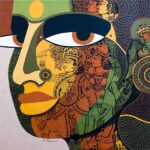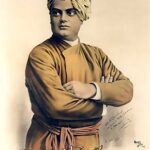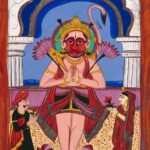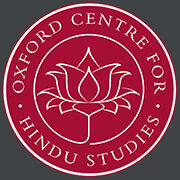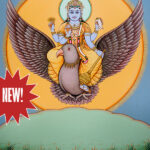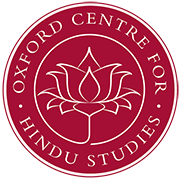Bhagavata Purana: Sacred Text and Living Tradition
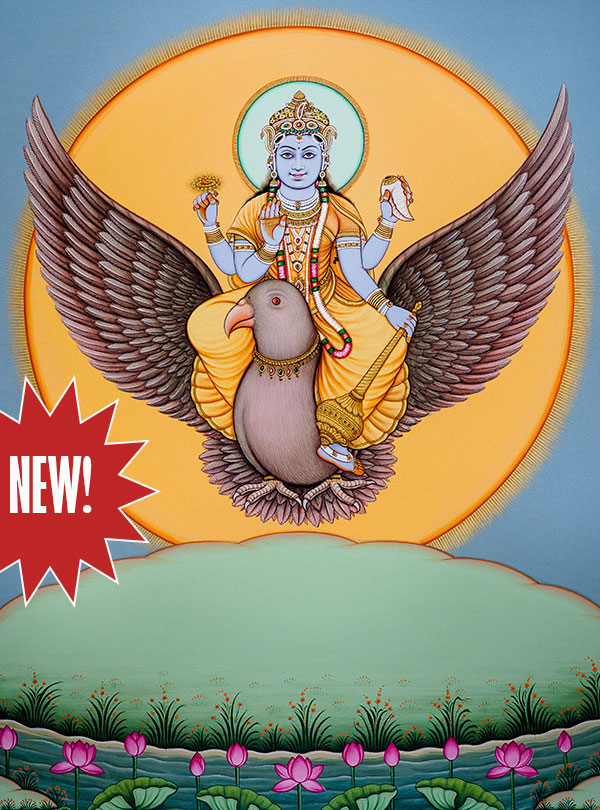
A vibrant example of living literature, the Bhagavata Purana (often referred to as Srimad Bhagavatam) is a hugely popular Hindu sacred text written in Sanskrit verse. It has inspired major north Indian bhakti traditions as well as schools of dance and drama, and continues to permeate popular Hindu art and ritual in India and the diaspora.
In this course, we examine the Bhagavata Purana’s key themes and its extensive influence on Hindu thought and practice.
First, we will see how the text develops major Hindu philosophical ideas, social dynamics, psychology of self-realization, and cosmology – all with a central focus on devotion (bhakti) to the Supreme, specifically as Vishnu/Narayana/Krishna.
We will then look at the text as a “living tradition” through various media, including oral recitation, dramatic and dance performance, and by translation and publication in and beyond India.
This course is based on the edited collection: Bhagavata Purana: Sacred Text and Living Tradition. Students will receive an electronic copy of the book.
The course is produced by the book’s editors: Prof. Ravi Gupta and Dr Kenneth Valpey, who will also be tutoring the course for its first presentation in April 2024.
Start Date: 21 April 2024
Enrol today – Late enrolments close soon
Course Duration: Eight Weeks
275 pages
Optional Assessment: Essay
On-Demand Video
The main video component of your course. On-demand means you can watch at the time that suits you.
5hr 22min
Five Zoom sessions
Meet tutors and students from other courses and explore other areas of Hindu studies. These sessions are open to students enrolled in any course.
Monday 29 April 3pm
Tuesday 7 May 2pm
Tuesday 14 May 2pm
Saturday 25 May 5pm
Sunday 2 June 6pm
These are all UK times. Recordings are available for any sessions you miss
£145
Learning Objectives
- to understand the Bhagavata Purana’s main themes by drawing on materials from comparative religion, theology, history, anthropology and ethnomusicology;
- to place the Bhagavata Purana in a historical context;
- to relate the Bhagavata Purana to other sacred literature especially the Vedas, Brahmasutra, and the Mahabharata;
- to evaluate the Bhagavata Purana in light of the text’s rich commentarial tradition;
- to appreciate the aesthetics of the Bhagavata Purana from both a practitioner’s and scholar’s perspectives;
- to recognise how the Bhagavata Purana’s poetry, metaphors and literary ornamentation shapes the world of the Bhagavata;
- to gain insight into the Bhagavata Purana’s historical and current popularity and its everyday-impact on religious practice.
Session One: Introducing the Bhagavata Purana
To begin this journey into the Bhagavata Purana, we first consider the text in its historical context before moving into a brief overview of its philosophy, theology, sociology, and literary features. Aided by one of the Bhagavata’s most famous stories – the Churning of the Milk Ocean – we will call attention to some important themes, noting how the work as a whole functions to “churn” and refine devotional emotions.
The highest dharma of good persons who are without envy—dharma that is free from deceit—is found here in the Bhagavata Purana, which was composed by the great sage (Vyāsa). The matter to be known here is genuine—it grants well-being and destroys the three miseries. Those virtuous people who desire to hear this Bhagavata Purana immediately and at once capture the Lord in the heart! What is the use of other books?
Bhagavata Purana: 1.1.2
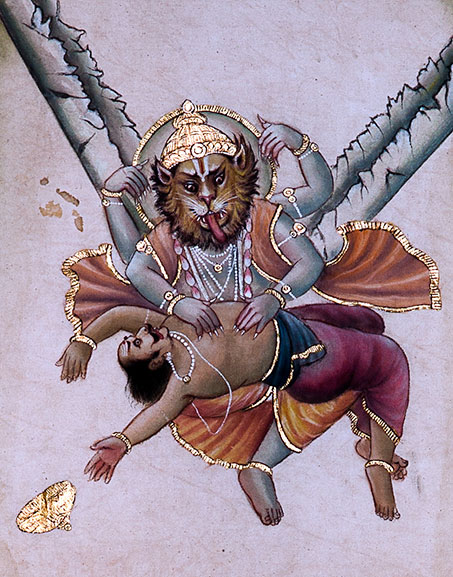
Session Two: Stories to be Remembered – The Bhagavata’s Narratives of Bhagavatas
The Bhagavata Purana is a web of narratives, each developing and illustrating the primacy of bhakti. In this session we look at two particular tales. First, the relatively long Man-Lion avatāra (descent) story highlights the theme of divine protection (in a “surprise appearance”) as well as characteristics of saintliness. Secondly, we look at the story of King Bharata traversing three successive lifetimes to gain spiritual perfection. Narratives of the Bhagavata Purana’s first nine books (skandhas) lead into the work’s tenth and longest book, with its central narrative on the life of Krishna.
Session Three: A Book to be Heard and Seen – Modern Bhagavata Recitation and Performance Cultures
As a living tradition, the Bhagavata Purana is as much a culture as a text. This is especially seen in its recitation and explication in assemblies, small and large. What sort of social and performative dynamics are at play in such events, and what can we learn about the Bhagavata’s appeal despite – or because of – modern distractions? As a recitation performance that is often done over seven-day periods, Bhagavata-kathā is led by a kathākar – a trained and experienced speaker. What sort of training does he or she receive?
Session Four: A Book to be Read and Reread – Ways of Entering the Bhagavata Purana
In this lesson we will enter into ways of reading the Bhagavata Purana, giving attention to its commentarial traditions that reach back to the 14th century and forward to the present day. What purposes do these commentaries serve, and how might we be enriched by them? We will sample some specific commentaries to answer these questions. Also, we will look at how the Bhagavata Purana itself advises its readers to get the most from their reading, by engaging oneself in the various devotional practices of bhakti-yoga. Finally, we will briefly consider what are the challenges and opportunities of translating the Sanskrit text of the Bhagavata Purana into a modern language.
Session Five: In-groups, Out-groups, and Everyone In Between
The Bhagavata Purana is strikingly inclusive. Everyone is invited to enter its world of bhakti. But this is not to say that no distinctions are made. In this lesson we consider some of the work’s main social and ideological designations, distinctions, and judgments of propriety and impropriety, always measured against its ideal of unadulterated devotion to the supreme divinity (Nārāyana, Vishnu, Krishna). We will also take up the issue of feminine representation in the Bhagavata, culminating in what the text celebrates as the perfection of devotion, embodied in the cowherdesses of Vrindavan.
Session Six: The Powers That Be – Krishna and his Energies
A cornerstone of the Bhagavata Purana’s philosophy and theology is that ultimate reality is irreducibly personal, and that as the energetic source of all existence, Krishna has energies by which he accomplishes his many purposes. In this lesson we see how the Bhagavata Purana’s theism works to illuminate the human condition and sensitise readers to its vision of perpetual interplay of the eternal self with the supreme Self in ever-deepening relationships of love.
Śrī Bhagavān said: Knowledge of me is the greatest mystery. Receive it (now), as spoken by me, along with its application, secrets, and supplements.
All that I am—my nature, form, qualities, and activities: may you comprehend that truth, by my grace.
I alone existed in the beginning, and nothing else that is beyond cause and effect existed. All of this after (creation) is me, and what remains (in the end)—I am also that!
Bhagavata Purana 2.9.31-33
Session Seven: A Moveable Feast – How the Bhagavata Migrated West
In this session, we trace the modern history of the Bhagavata Purana’s westward migration. This takes us first to 19th century Bengal with its religious reform movements and vocal reformists, some of whom found cause to criticize the Bhagavata. This would not deter admirers of the Bhagavata from seeking ways to defend and popularise the text – most notably Kedarnath Bhaktivinoda (1838–1915), his son Bhaktisiddhanta Sarasvati (1874–1937), and the latter’s disciple, A.C. Bhaktivedanta Swami (1896–1977). One very important question we address in this session is: which conditions in the West were favorable for reception of the Bhagavata Purana?
Session Eight: God’s Timetable – Divine Līlā and the Present-day World
A major subject of the Bhagavata Purana is the nature of time, and an essential question it addresses is, how best to use our time in this life, given that it leads us finally to our death? In this lesson we pay attention to how the cyclical quality of time is highlighted to lead the text’s readers and listeners to practices of remembrance (smaranam) that open out into the timeless dimension of līlā – divine play – that brings one beyond even liberation. Conversely, we consider how the Bhagavata Purana can speak to us in today’s troubled and conflicted world.
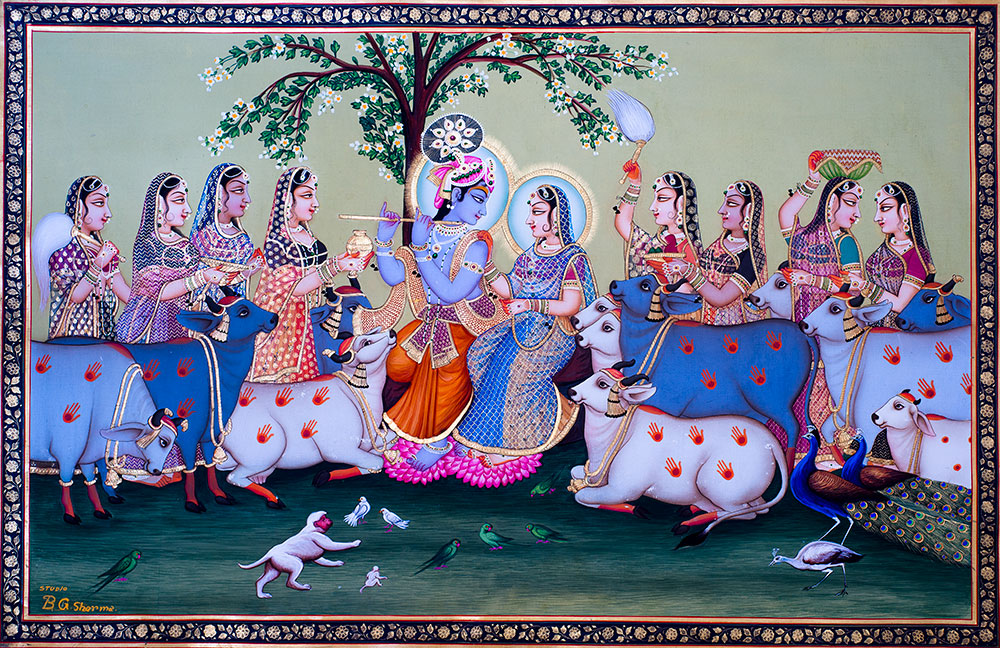
Your Tutor

Dr Kenneth Valpey
Ken Valpey is one of the OCHS’s early students receiving his Doctorate from the University of Oxford in 2004. He is a theologian with a particular interest in animal ethics. He is an OCHS Fellow and a co-director of our Bhagavata Purana Research Project.
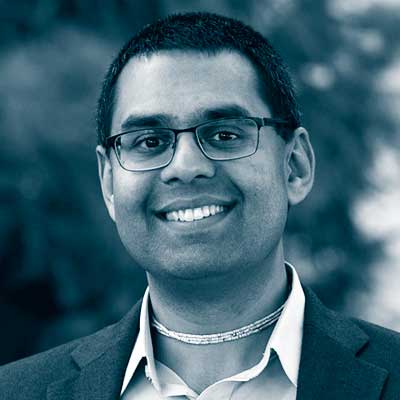
Prof. Ravi Gupta
Ravi was an early Doctoral student at the Oxford Centre for Hindu Studies. He now holds the Charles Redd Chair of Religious Studies and serves as Professor and Department Head of the Department of History at Utah State University. He is the author or editor of four books, including an abridged translation of the Bhagavata Purana with Kenneth Valpey (Columbia University Press, 2017). Ravi has received four teaching awards, a National Endowment for the Humanities summer fellowship, and two research fellowships at Oxford. He is a Permanent Research Fellow of the Oxford Centre for Hindu Studies and a past president of the Society for Hindu Christian Studies. His current research focuses on the Bhagavata Purana’s Sanskrit commentaries.
